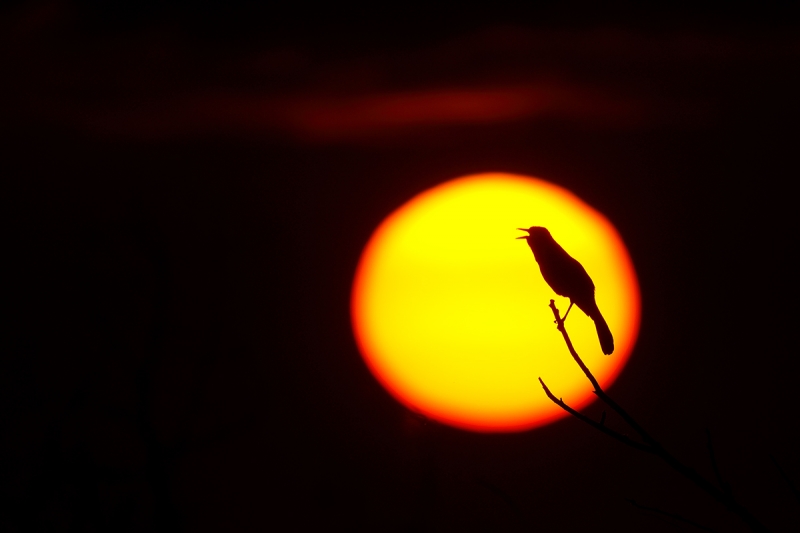Stuff
It is Thursday morning 4 JAN 2018 as I begin to type. Tuesday afternoon in central Florida was cold and rainy and windy. My nonstop flight to PHX was long for whatever reason, the plane seemed as cold as it had been in Orlando. I picked up my rental car and made it to David Rosenberg’s house just after 10pm Mountain time after waking at 3am Eastern time. It was a very long day. We woke early and photographed with friend and skilled photographer Bryan Holliday at the Riparian Preserve at Gilbert Water Ranch. It is a tough place to shoot but with patience we did well. After my first physical therapy session and lunch at Whole Foods, we headed back to the preserve and did well again with some elegant Black-necked Stilts. I will likely give it another shot this morning …
Click on the logo-link above for great holiday savings!
$300 off on the Canon 100-400 II!
$300 off on the Canon 100-400 II!
The Streak
Today makes one hundred fifty-eight days in a row with a new educational blog post! This one took less than an hour to prepare including the time spent optimizing the image. With all of my upcoming free time (or not …), the plan right now is to break the current record streak of 480 … Good health and good internet connections and my continuing insanity willing.
Booking.Com
Booking.Com came through for me twice again recently with both the DeSoto Fall IPT and next July’s UK Puffins, Gannets, and Bempton Pre-trip room reservations. And all the rates were great. If you’d like to give Booking.Com a shot, click here and you will earn a $25 reward. Thanks to the many who have already tried and used this great service.
Gear Questions and Advice
Too many folks attending BAA IPTs and dozens of folks whom I see in the field, and on BPN, are–out of ignorance–using the wrong gear especially when it comes to tripods and more especially, tripod heads… Please know that I am always glad to answer your gear questions via e-mail. Those questions might deal with systems, camera bodies, accessories, and/or lens choices and decisions.
|
|
|
This image was created down by the lake near my home at Indian Lake Estates, FL on the evening of December 22. I used the Induro GIT304L Grand Series 3 Stealth Carbon Fiber Tripod/Mongoose M3.6-mounted Canon EF 600mm f/4L IS II USM lens, the Canon Extender EF 2X III, and my favorite silhouette photography camera body, the Canon EOS 5D Mark IV. ISO 200 in Av mode. WB: K7500 at 5:31pm with just a bit of haze in front of the sun. LensAlign/FocusTune micro-adjustment: -10. Manual focus with rear focus set. Click on the image to enjoy a larger version. Boat-tailed Grackle, singing male at sunset. |
The Disc of the Sun Exposure Answers
In the Dime a Dozen Part IV: It’s Just a Boat-tailed Grackle. And some really tough exposure questions … blog post here, I asked, with regards to the image above, Knowing that the ISO was 200 and that I was in Av mode, what do you think the exposure compensation was? What do you think the shutter speed was? And what do you think the aperture was?
The Exposure compensation was -4 stops — yes Virginia, many of the current camera bodies can show up to +/- five full stops of EC. The shutter speed was 1/8000 sec. And the aperture was f/16. All that with the sun somewhat muted by a very light cloud on the western horizon …
The Big Lesson …
The big lesson here is not the exposure data, but how I got there. And how I got there is exactly how I get to the right exposure 99% of the time. From experience, I knew that I would need to lower the ISO, use a very high shutter speed, and set a very small aperture. I don’t remember exactly where I started but I do know that the the brightest part of the sun, the yellow in the upper third of the disc, was toasted with totally blinking highlights. So I increased the shutter speed and went to a smaller aperture. Took another image, and then rechecked. And then repeated once or twice more until the blinkies were gone. Same as with every other image, just a bit harder because of the extreme brightness of the sun.
In the Exposure Simplified/Creating 11 a.m. Silhouettes section of The Art of Bird Photography II (ABP II: 916 pages, 900+ images on CD) there is a still-amazing image of a single Snow Goose in flight against the disc of the sun. Here is the caption:
Snow Goose against bright sun, Bosque Del Apache NWR, NM
Canon 500mm f/4L IS lens with stacked 1.4 and 2X II TCs and EOS-1D Mark II. ISO 50. Manual Mode: 1/8000 sec. at f/64. I remember jumping for joy when I first saw this image on the camera’s LCD. In retrospect, I wish that I had pressed the shutter a fraction of a second sooner so that the bird would have been positioned a bit farther back in the frame.
Notes:
- 1-I now refer to “11am Silhouettes” as “Blasting Highlights” situations.
- 2-As far as I know it is no longer possible to focus accurately with stacked teleconverters when using Series III TCs.
If my math is correct, the exposure for the Snow Goose image was five stops brighter than the exposure for the grackle image: f/16 — f/32 — f/64 is two stops darker, ISO 50 — ISO 100 — ISO 200 is three stops darker. That adds up to a total of five stops brighter. What’s my point? My point is that really serious students of bird photography would have stored that exposure information in their heads so that in similar situations they would have a clue as to where to begin when attempting to photograph the disc of the sun …
Here is some safety information adapted from the same section in ABP II:
Photographing the Bright Sun
This is perhaps the most challenging exposure and silhouette situation. Images in this category are created on clear days with the sun up and fully clear of the horizon. The sky around the sun in these situations is an extremely bright white. It appears black in the photographs because we are underexposing as much as possible in an effort to keep from overexposing the blazing blasting sun. When photographing the bright sun on a clear day, care must be taken not to damage one’s eyes. If you look away from the sun and the world looks at all purplish, it is best to cease and desist or risk serious and permanent eye damage. In addition, it is best to restrict such efforts to one half hour after sunrise and one half hour before sunset. If it is hazy or the sun is at all obscured by thin clouds or fog, you can figure your exposures normally.
The text that follows the section above details a technique that allows you to create such images without risking eye damage.
More on Coming Soon
February 2018 Spoonbill Boat IPT (definite!)
Two Fort DeSoto IPTs (April and May, 2018)
Three Gatorland IPTs (March, April, and May, 2018 — including early entry and late stay — tentative)
Three Sandhill Crane chicks and colts Master Classes at Indian Lake Estates (March)
The Master Classes will be small groups — strictly limited to four photographers — with the first folks who register staying at my home and the others staying at a chain motel in Lake Wales. Live, think, and breathe photography from Friday afternoon through lunch on Monday morning; all meals included. We will enjoy three morning photography sessions with the main subjects being tame Sandhill Cranes almost surely with chicks or colts. Also vultures and Cattle Egrets and more. Limpkins possible. There will be three afternoon photo sessions with hopefully glorious sunsets like the ones you have been seeing on the blog recently. I will micro-adjust one of your lenses during a group instructional session and all will be welcome to practice what they have learned during the breaks using my lighting gear. We will sit together around my dining room table and pick everyone’s keepers, enjoy guided Photoshop sessions, and, on Monday before lunch, folks can make a single large print of their favorite image.
Folks who would like advance notice on any of the above are welcome to shoot me an e-mail.
Support the Blog
Please help support my (stupendous) efforts here on the blog by remembering to click on the logo link above each time that you shop Amazon. That would be greatly appreciated. There is no problem using your Prime account; just click on the link and log into your Prime account. With love, artie
If In Doubt …
If in doubt about using the BAA B&H affiliate link correctly, you can always start your search by clicking here. Please note that the tracking is invisible. Web orders only. Please, however, remember to shoot me your receipt via e-mail.




Please Remember to use my Affiliate Links and to Visit the New BAA Online Store 🙂
To show your appreciation for my continuing efforts here, we ask, as always, that you get in the habit of using my B&H affiliate links on the right side of the blog for all of your photo and electronics purchases. Please check the availability of all photographic accessories in the New BIRDS AS ART Online Store, especially the Mongoose M3.6 tripod head, Wimberley lens plates, Delkin flash cards and accessories, and LensCoat stuff.
As always, we sell only what I have used, have tested, and can depend on. We will not sell you junk. We know what you need to make creating great images easy and fun. And please remember that I am always glad to answer your gear questions via e-mail.
I would of course appreciate your using our B&H affiliate links for all of your major gear, video, and electronic purchases. For the photographic stuff mentioned in the paragraph above, and for everything else in the new store, we, meaning BAA, would of course greatly appreciate your business. Here is a huge thank you to the many who have been using our links on a regular basis and those who will be visiting the New BIRDS AS ART Online Store as well.
Be sure to like and follow BAA on Facebook by clicking on the logo link upper right. Tanks a stack.
Typos
In all blog posts and Bulletins, feel free to e-mail or to leave a comment regarding any typos or errors. Just be right :).
















Hi Artie,
Greetings from Bangalore, India. How do you photograph the sun – do you look through the viewfinder at the sun (I hope not!), or do you look at the LCD screen?
Hi Artie, I was very surprised when I read the exposure information for the grackle image and even more so for the snow goose silhouette image. Thank you for the great teachings on 11am silhouettes exposure and safety. A belated Happy New Year to you,
Jake
Hi Artie,
Beautiful silhouette and useful exposure info. No doubt the eye-safety warning is well headed. In your case the sun was low and somewhat obscured, but it may be worth noting that gear damage is also a risk if pointed too long at a bright sun, as some discovered the hard way during the solar eclipse in August:
https://www.lensrentals.com/blog/2017/09/rental-camera-gear-destroyed-by-the-solar-eclipse-of-2017/